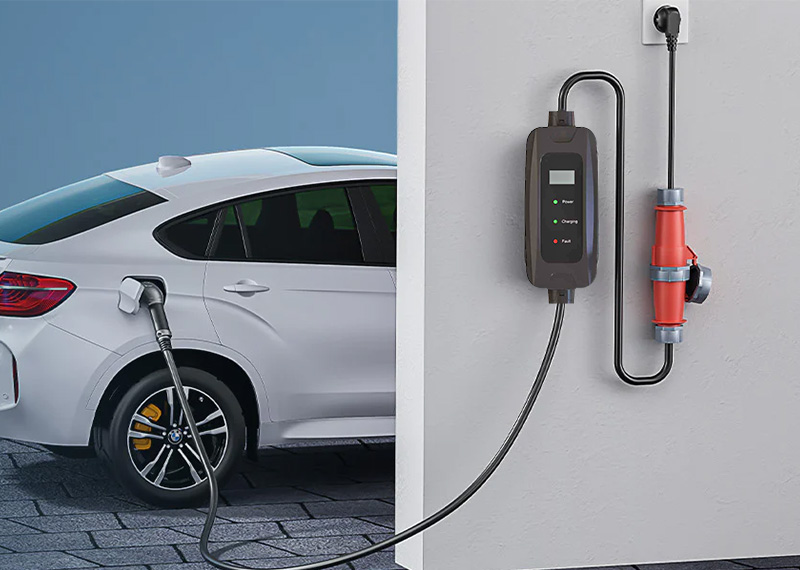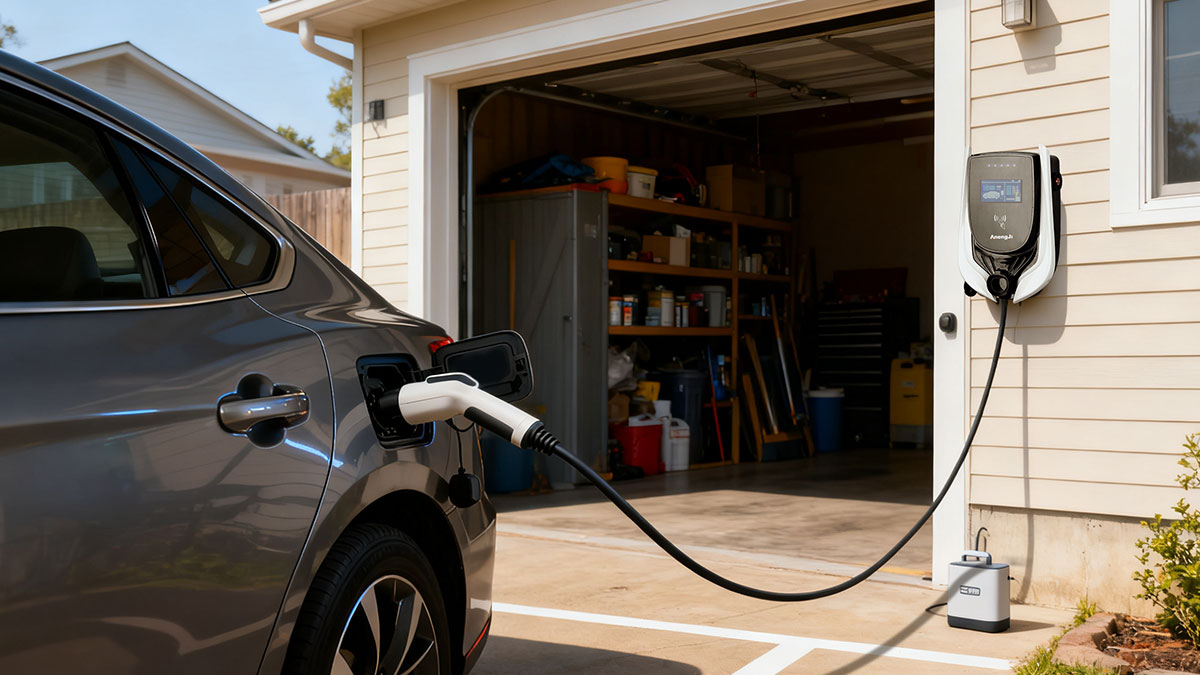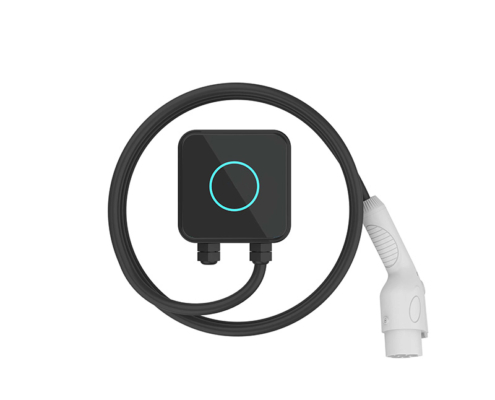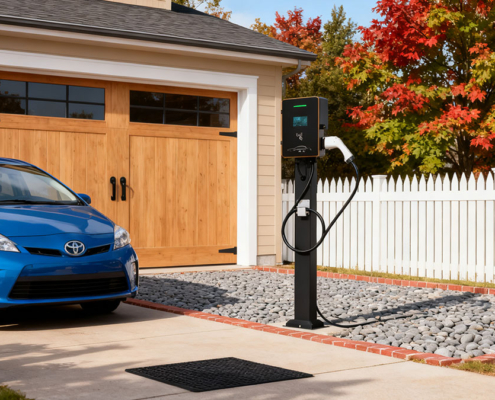Introduction
If you’ve just bought your first electric car, there’s a good chance your first question is: Can I plug it into a regular outlet at home?
The short answer is yes — but with a few important things to keep in mind.
This method is called Level 1 EV charging, and it’s the simplest way to charge your EV. It uses a standard 120-volt household outlet and the portable charging cable that came with your car. The cable connects directly to your EV’s charge port, letting the onboard charger slowly feed power into the battery.
It’s convenient because almost every home already has the right outlet. You don’t need to install anything new. But it’s also the slowest and least efficient way to charge. Before you rely on it every night, it’s worth understanding what it can — and can’t — do.
How Level 1 EV Charging Works

Level 1 charging uses the same 120-volt outlets found in most American homes (known as NEMA 5-15). The portable charger, or EVSE (Electric Vehicle Supply Equipment), converts AC power from the wall into DC energy that your car’s battery can store.
Typically, Level 1 charging adds about 3 to 5 miles of range per hour. That means bringing a mid-size EV battery (like 60 kWh) from 20% to 80% could take between 20 and 40 hours.
If you only drive short distances every day — say, commuting 20 to 30 miles — this can work perfectly. Plug in overnight, and you’ll likely have enough charge for your daily needs. But if you have a longer commute, multiple EVs, or take frequent trips, Level 1 charging can quickly feel too slow. You might wake up to find your car still charging when you need to leave.
Why Some EV Owners Stick with Level 1 Charging
Despite its slow speed, Level 1 has a few undeniable advantages.
It’s cheap, simple, and available anywhere. Every home has standard 120-volt outlets, so you can charge without extra installation costs. That’s especially handy for renters, apartment dwellers, or anyone waiting to upgrade their electrical system.
It’s also plug-and-play: connect the cable, and your car starts charging automatically. The system shuts off when the battery’s full, so there’s little risk of overcharging. And because Level 1 draws less power, it puts less strain on your home’s electrical load — useful for older houses with limited capacity.
For light driving or backup charging, it’s a practical solution that just works.
The Drawbacks and Safety Risks
Still, Level 1 charging isn’t ideal for everyone. The biggest issue is time. Charging for hours — sometimes days — to reach full capacity just isn’t realistic for busy drivers.
Cold weather makes things worse. In winter, batteries charge slower and lose efficiency, meaning your overnight charge might not last as long as expected.
There’s also a safety concern. Standard outlets weren’t designed for continuous high loads. Plugging your EV into an old or shared circuit can cause the outlet, wiring, or breaker to overheat — especially in older homes.
According to the National Fire Protection Association (NFPA), many home EV-charging incidents come from using cheap extension cords or poor-quality adapters. These small shortcuts can lead to serious electrical hazards over time.
How to Safely Charge Your EV from a Regular Outlet
If you’re using Level 1 charging now, here are a few tips to keep things safe and reliable:
Use the original charging cable that came with your car — UL or CSA certified with built-in protection.
Avoid extension cords and plug directly into the wall outlet.
Pick a dedicated circuit, ideally in your garage or an outdoor-rated outlet.
Check regularly for heat or wear on cables and plugs.
Have a licensed electrician inspect your home’s wiring if you plan to charge daily.
Plan ahead for an upgrade — even if you’re fine now, mapping out a Level 2 setup will save time later.
Why Upgrading to Level 2 EV Charging Makes Sense
For most EV owners, moving from Level 1 to Level 2 home charging is the smart long-term step.
Level 2 uses a 240-volt outlet (NEMA 14-50 or 6-50) and delivers 3x to 6x faster charging speeds. Depending on your car, that’s about 20–30 miles of range per hour — full charge in 4–10 hours instead of 40.
It requires a professional installation, typically costing $500 to $2,000 including hardware and labor. But you get more than just speed. Level 2 chargers often come with smart features — Wi-Fi control, scheduled charging, load balancing, and energy tracking. You can even sync with your home’s smart energy system to charge during off-peak rates.
If your household has multiple EVs, Level 2 setups can manage both cars efficiently through dynamic power sharing — keeping your system balanced and safe.
Incentives and Future-Proofing Your Setup
In the U.S., installing a home charger can qualify for federal and state incentives. The IRS Form 8911 offers up to $1,000 in tax credits, and many states add another $500 to $1,000 rebate. Similar programs exist in Canada and across Europe.
Setting up a 240-volt system now also prepares you for future technologies like V2H (Vehicle-to-Home) or V2G (Vehicle-to-Grid) power transfer — turning your EV into a backup energy source for your house. It’s an investment that pays off over time.
Final Thoughts: Level 1 Is a Start, Not a Finish Line
Yes, you can absolutely charge your electric car at home using a regular 120-volt outlet. It’s simple, affordable, and works for light daily driving.
But if you drive often, want faster charging, or plan to own more than one EV, upgrading to a Level 2 charger will make life easier, safer, and more efficient.
Think of Level 1 as the beginning — a bridge to something better. Evaluate your driving habits, parking setup, and electrical capacity, then make a choice that fits your future. Whether you’re charging overnight or investing in a smart home system, the right setup will make your EV ownership smoother, safer, and more sustainable.
FAQ – Home EV Charging
1. Can I charge my electric car with a regular outlet?
Yes. Most EVs can plug into a standard 120V household outlet using the cable that came with your car. This is known as Level 1 charging.
2. How long does Level 1 charging take?
It usually adds 3–5 miles of range per hour. Fully charging a mid-size EV battery may take 20–40 hours.
3. Is Level 1 EV charging safe?
Yes, if done correctly. Use certified equipment, avoid extension cords, and have an electrician inspect your wiring if you charge daily.
4. What’s the cost to install a Level 2 charger at home?
On average, between $500 and $2,000 including installation. Federal and state tax incentives can help offset the cost.
5. Is Level 1 charging enough for daily driving?
For short commutes and low-mileage users, yes. But most EV owners eventually upgrade to Level 2 for faster and more reliable charging.








Leave a Reply
Want to join the discussion?Feel free to contribute!